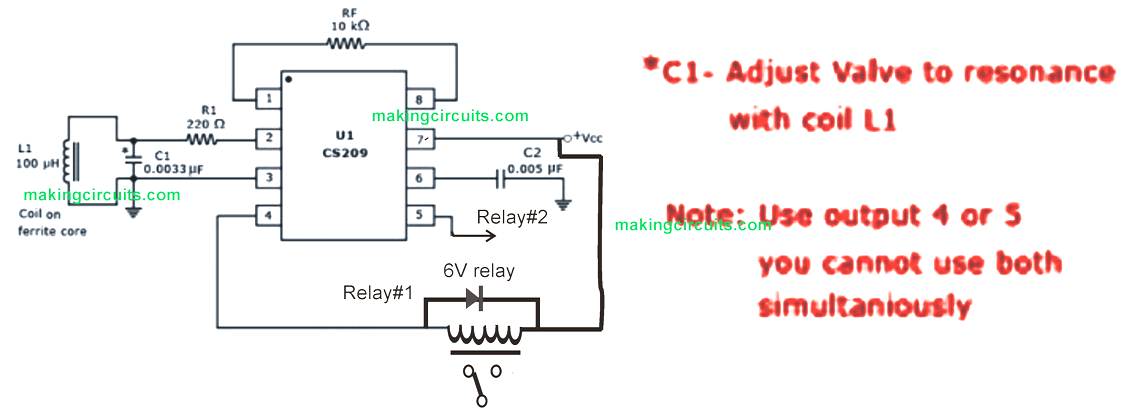The post details an LC tuned proximity detector circuit, using a LC tank circuits and the IC CS209A
This is a straightforward proximity switch circuit using IC CS209. The CS209A is actually a bipolar monolithic integrated circuit for use in metal detection / proximity detection purposes.
The CS209A consists of an oscillator set up through an external parallel resonance tank and a feedback resistor hooked up between pins 2 and 3.
The inner oscillator runs close to the Resonance Frequency of the tank circuit. Whenever a metallic object is introduced towards the inductance, the amplitude of the voltage over the reservoir capacitor progressively starts to drop.
Once the oscillation volume gets to a particular degree, the IC triggers the outputs to toggle states. The potentiometer joined across pins 1 and 8 is tweaked to some quantity of detection range. The higher the resistance, the higher the distance from your trigger level.
The detection range could be enhanced simply by using a high Q coil. The absolute maximum feasible range is One inch having a well-tuned circuit.
The only hard part for this LC tuned proximity detector circuit would be to set the circuit to some specific range.In order to accomplish the installing of a metal part at the preferred distance from the coil (with 1 inch) and adapt the resistance Rf to ensure that one of the outputs (Pin 4 or 5) flips state.

Leave a Reply